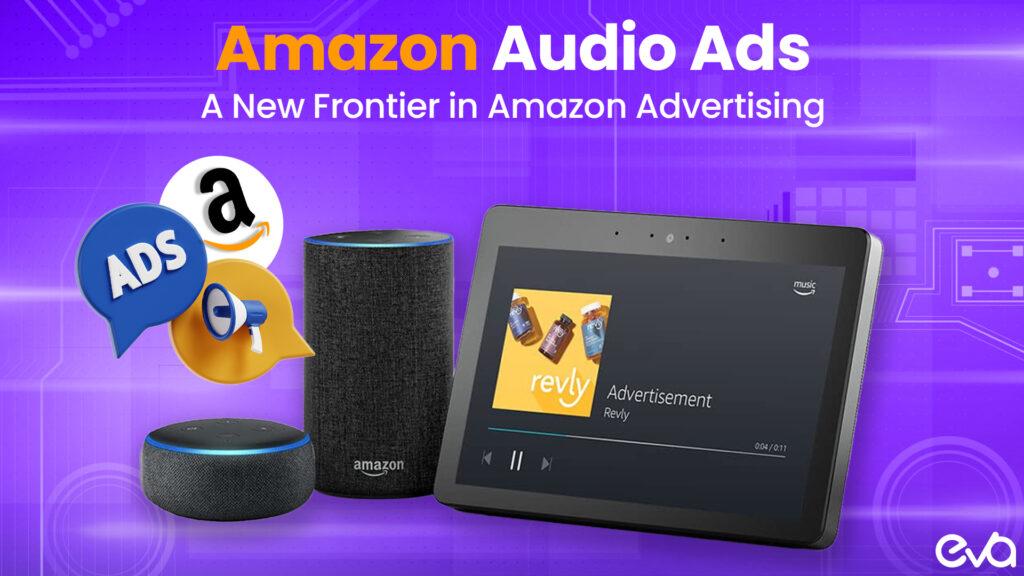Table of Contents
- What Are Amazon Audio Ads?
- Why Amazon Audio Ads Are Making a Difference
- How Amazon Audio Ads Engage Consumers
- Step-by-Step Guide to Setting Up Amazon Audio Ads
- Interactive Audio Ad Requirements for Different CTAs
- Choosing the Right Audio Ad Length for Your Campaign
- Tracking the Success of Amazon Audio Ads
- Key Metrics to Monitor
- Analyzing Consumer Engagement
- Optimizing Based on Performance Data
- How Eva Can Help with your Amazon Audio Ads
- Conclusion
- FAQ
What Are Amazon Audio Ads?
Amazon Audio Ads represent a new way to reach consumers through immersive sound experiences. These ads, part of Amazon’s advertising options, engage users through audio content across platforms like Amazon Music, Alexa, and Audible.
Unlike traditional ads that rely on visuals, Amazon Audio Ads focus on sound, providing a unique opportunity for brands to connect with their audience during moments when they are most attentive, such as while driving, exercising, or relaxing at home.
As more people turn to audio content—podcasts, music streaming, and voice-activated devices—the importance of audio ads in marketing strategies continues to grow.
This shift towards sound-first interactions is not just a trend but a major change in how consumers engage with content.
Amazon Audio Ads are leading this change, offering brands a way to break through the clutter of traditional digital ads and connect with their audience in a more personal, targeted way.
This blog post explores why Amazon Audio Ads are reshaping digital marketing, how they engage listeners uniquely, and provides a guide on setting up and optimizing these ads for your business.
Why Amazon Audio Ads Are Making a Difference
The Growth of Audio Advertising
Digital marketing has seen many changes over the past decade, and audio advertising has emerged as a powerful medium.
The consumption of audio content is on the rise, driven by the growing popularity of podcasts, music streaming services, and smart speakers.
In the U.S., spending on digital audio advertising is expected to reach $7.89 billion by 2025, according to eMarketer. This growth shows that audio advertising is becoming an essential part of modern marketing.
Audio ads allow brands to reach consumers during times when they aren’t focused on screens. Whether it’s during a morning jog, a commute, or while cooking, audio ads can deliver a brand’s message in a way that feels more personal and less disruptive.
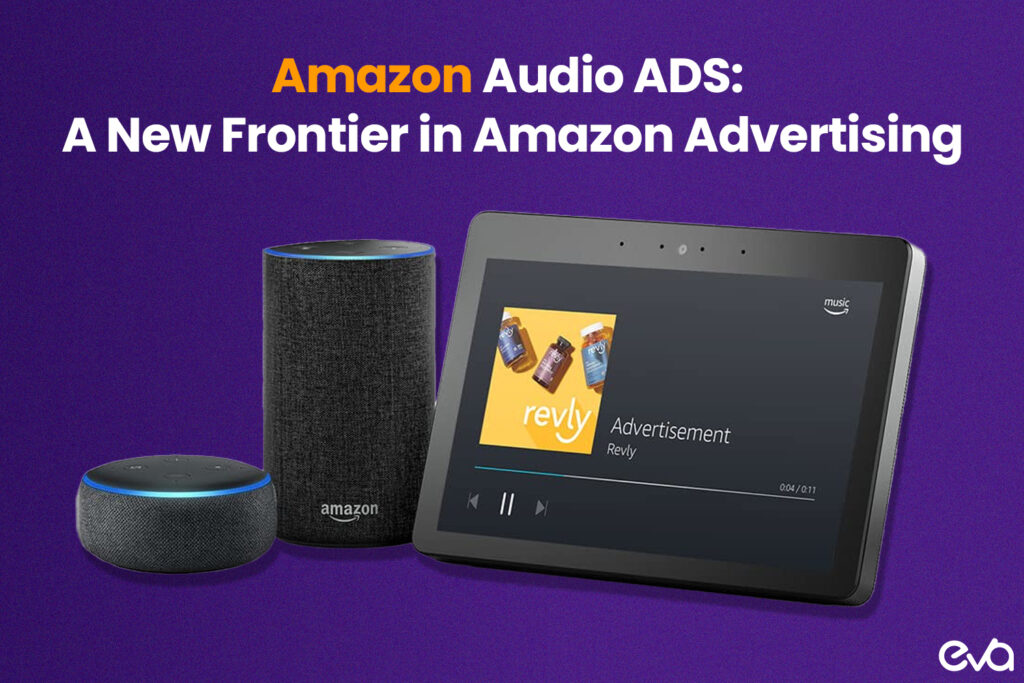
This is especially important as consumers become better at ignoring or blocking traditional digital ads.
- Fact: Nielsen reports that 75% of U.S. households now have at least one smart speaker, making audio advertising more effective than ever before.
Amazon Audio Ads take advantage of this trend by integrating smoothly into the daily routines of millions of consumers.
As smart speakers like Alexa become more popular, the reach and effectiveness of Amazon Audio Ads will continue to expand.
High Engagement from Audio Listeners
One of the strongest reasons to invest in Amazon Audio Ads is the high level of engagement they achieve.
Audio listeners are often more focused compared to those consuming visual content. This is because audio allows for multitasking; listeners can absorb information while engaging in other activities, such as driving or working out.
- Fact: A study by Edison Research and Triton Digital found that 86% of podcast listeners stay engaged with most or all of an episode, showing high levels of attention.
The immersive nature of audio content means listeners are more receptive to ads, especially when they are relevant and well-targeted.
Amazon’s vast data resources enable advertisers to create personalized audio ads that resonate with their target audience, further boosting engagement and effectiveness.
Moreover, since audio ads are not easily skipped or blocked, they offer a more reliable way to reach consumers.
In a world where ad fatigue is common, the ability to engage listeners through audio presents a valuable opportunity for brands to stand out.
Consumers Are Growing Tired of Screen-Based Ads
With the increase in screen time, consumer fatigue with screen-based advertising has also grown. The average American spends more than 7 hours a day looking at a screen, leading to what some experts call “digital fatigue.” This has resulted in a shift towards content that doesn’t require visual attention, like audio-based interactions.
- Survey Insight: A survey by Adobe found that 53% of consumers find audio ads less disruptive than video ads, making them a preferred method of advertising.
Amazon Audio Ads tap into this shift by offering a non-intrusive, screen-free way to reach consumers. By delivering content that can be consumed passively—while cooking, driving, or exercising—brands can engage their audience in a more relaxed and receptive state of mind.
This shift from visual to auditory interaction is not just a response to consumer preferences but a strategic move to capture attention in a crowded digital space.
For brands, this means that audio ads offer a way to connect with consumers without adding to their screen fatigue, making the ad experience more enjoyable and effective.
Interactive Features of Amazon Audio Ads
One of the most innovative aspects of Amazon Audio Ads is their interactive capabilities. Unlike traditional audio ads that simply play in the background, Amazon Audio Ads can engage listeners in real-time through voice commands.
This interactivity is made possible by Amazon’s integration with Alexa and other smart devices, allowing users to take immediate action in response to an ad.
For example, after hearing an ad for a new product, a listener could say, “Alexa, add this product to my cart,” or “Alexa, remind me about this product later.”
This level of interaction not only makes the ad more engaging but also simplifies the consumer’s path to purchase, reducing the friction that often comes with digital transactions.
Example: Imagine listening to a podcast and hearing an ad for a new book. With a simple voice command, you can add the book to your Amazon cart without ever having to pick up your phone. This convenience is a key reason why interactive audio ads are so effective.
Interactive features like these not only enhance the consumer experience but also provide advertisers with valuable insights into consumer behavior.
By tracking how users interact with their ads, brands can gather data on engagement levels and refine their strategies accordingly.
How Amazon Audio Ads Engage Consumers
Personalization of Audio Ads
In today’s digital landscape, personalization is key to effective advertising. Consumers are bombarded with ads daily, and only those that are relevant and personalized tend to stand out.
Amazon excels at personalization, using its vast consumer data to deliver tailored ads that resonate with individual users.
Amazon Audio Ads are no different. By analyzing user behavior, purchase history, and preferences, Amazon can create audio ads that are highly relevant to each listener.
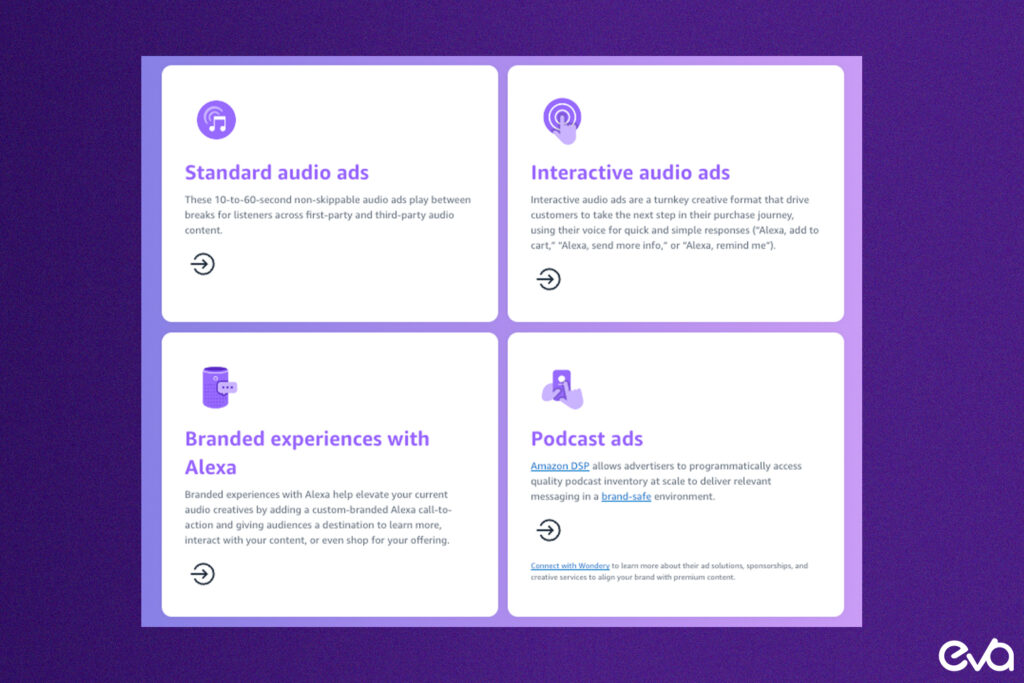
For instance, if a user frequently buys sports equipment, they might hear audio ads related to the latest fitness gear or upcoming sports events.
- Stat: Research by Epsilon shows that personalized ads can lead to a 20% increase in sales, highlighting the importance of relevance in advertising.
This level of personalization not only makes the ads more engaging but also increases the likelihood of conversion.
When consumers hear ads that speak directly to their interests and needs, they are more likely to take action, whether it’s making a purchase, visiting a website, or saving a product for later.
Interactive Features of Amazon Audio Ads
Interactivity is a hallmark of Amazon Audio Ads and one of the key factors that set them apart from traditional audio advertising.
Through integration with Alexa, Amazon has introduced a range of interactive features that allow consumers to engage directly with the ad content.
Some of the most popular interactive commands include:
- Add to Cart: Users can add a product directly to their Amazon cart using a voice command, making the purchasing process seamless.
- Remind Me: Listeners can set a reminder for a product or promotion, which Alexa will prompt them about later.
- Send More Info: This command allows users to request additional information about a product, which can be sent to their email or displayed on their Alexa-enabled device.
These interactive features not only make the ads more engaging but also provide a direct, measurable way for brands to track consumer interest and behavior.
By enabling consumers to interact with ads in real-time, Amazon Audio Ads transform passive listening into active engagement, increasing the overall effectiveness of the campaign.
Seamless Integration with Alexa and Other Devices
The success of Amazon Audio Ads is largely due to their seamless integration with Alexa and other Amazon devices.
As more households adopt smart speakers and voice-activated devices, the reach of audio ads continues to grow.
Amazon’s ecosystem of devices, which includes Echo speakers, Fire TV, and Alexa-enabled smart home products, provides a vast network through which audio ads can be delivered.
This integration means that consumers can interact with ads across multiple devices, whether they’re at home, in the car, or on the go.
- Fact: Amazon reports that over 100 million Alexa-enabled devices have been sold worldwide, offering a significant platform for audio advertising.
For advertisers, this level of integration offers unparalleled access to consumers. By reaching users on devices they interact with daily, Amazon Audio Ads can deliver messages in a context that feels natural and unobtrusive, enhancing the overall effectiveness of the campaign.
Step-by-Step Guide to Setting Up Amazon Audio Ads
Setting up an effective Amazon Audio Ad campaign requires careful planning and execution. Below is a step-by-step guide to help you get started.
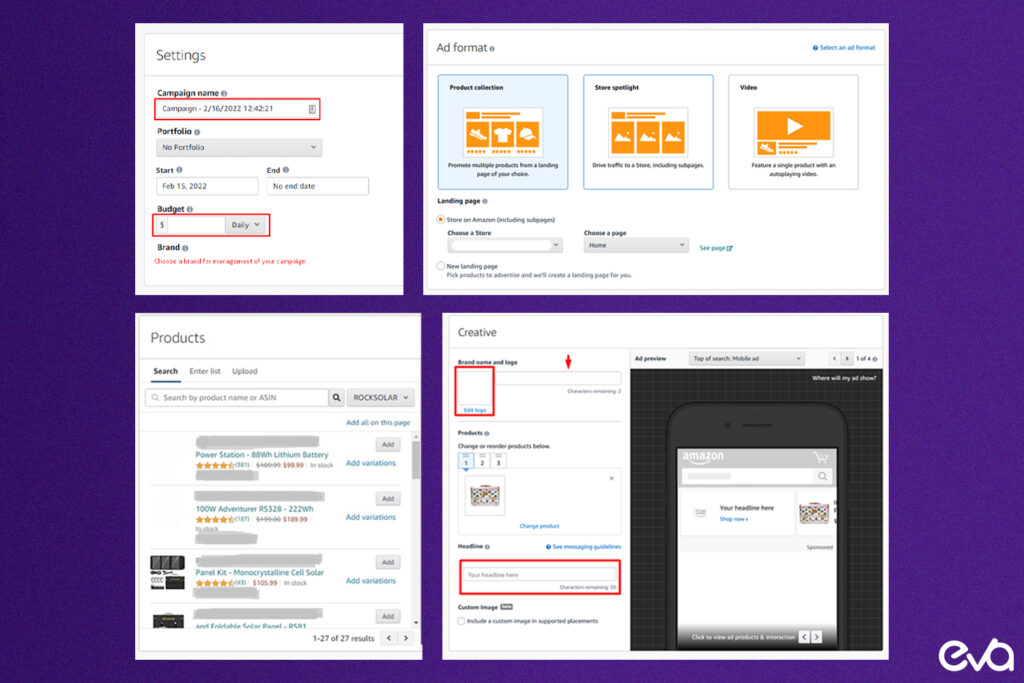
Step 1: Define Your Advertising Goals
Before launching any ad campaign, it’s crucial to define your objectives. Are you looking to increase brand awareness, drive sales, or promote a new product? Your goals will dictate the structure and content of your audio ads.
- Tip: Use the SMART criteria (Specific, Measurable, Achievable, Relevant, Time-bound) to set clear and achievable goals for your campaign.
Having well-defined goals will also help you measure the success of your campaign and make data-driven decisions to optimize performance.
Step 2: Connect with an Amazon Ad Consultant
Amazon offers dedicated ad consultants who can help you optimize your campaign. These experts can provide valuable insights into best practices, targeting options, and creative strategies to ensure your audio ads perform well.
- Action: Reach out to an Amazon Ad Consultant through the Amazon Advertising dashboard to get personalized advice and support for your campaign.
Working with a consultant can help you avoid common pitfalls and maximize the ROI of your ad spend.
Step 3: Submit Your Audio File and Companion Banner
Creating the right audio file is critical to the success of your campaign. Amazon has specific requirements for audio ads, which include:
- Length: 10 – 30 seconds.
- File size: Maximum 1MB.
- Format: WAV, MP3, or OGG.
- Volume: 192 kbps RMS normalized to -14 dBFS, Peak normalized to -0.2 dBFS.
In addition to the audio file, you’ll need to submit a companion banner that complements your audio ad. This banner will be displayed on screen devices when the audio ad is playing.
- Companion Banner Requirements:
- Creative dimensions: 1024 x 1024 pixels.
- Minimum file size: 750kb.
- Format: JPEG, JPG, or PNG.
- Include a click-through link for desktop, mobile, and tablet.
- Ad heading: Within 19 characters, including brand name/product.
- Avoid CTAs or styling the ad copy like a tappable interface.
- Creative dimensions: 1024 x 1024 pixels.
Ensuring that your audio file and companion banner meet these requirements will help your ad get approved quickly and perform effectively.
Interactive Audio Ad Requirements for Different CTAs
Amazon offers a range of interactive CTAs (Call to Actions) that can be integrated into your audio ads. Below are the requirements and best practices for each.
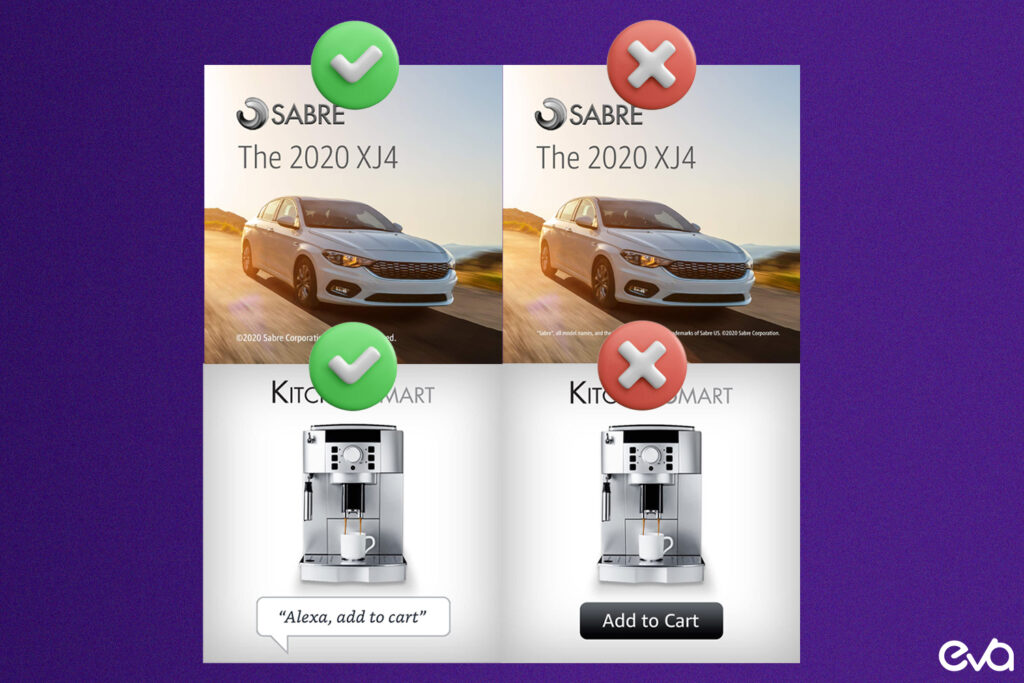
Add to Cart CTA
The “Add to Cart” feature allows users to add a product to their Amazon shopping cart directly through a voice command. This CTA is particularly effective for products that are already popular or in high demand.
- Requirements:
- Provide the ASIN (Amazon Standard Identification Number) of the product.
- Ensure that the ASIN is supported (e.g., Prime Pantry, subscriptions, and certain other ASIN types may not be eligible).
- Provide the ASIN (Amazon Standard Identification Number) of the product.
Remind Me CTA
The “Remind Me” CTA allows users to set a reminder for a product or promotion. This is especially useful for time-sensitive offers or products that are not yet available.
- Requirements:
- Set the reminder date, time, and text.
- Ensure that the reminder is relevant to the listener’s needs and interests.
- Reminders are triggered and delivered through Alexa and push notifications.
- Set the reminder date, time, and text.
Send More Info CTA
This CTA is designed for users who want to learn more about a product before making a purchase. The “Send More Info” feature can deliver additional details via email or Alexa.
- Requirements:
- Provide click-through URLs and brand names.
- Ensure that the information provided is clear, concise, and actionable.
- Interactive ads with this CTA are currently only available in the USA.
- Provide click-through URLs and brand names.
Choosing the Right Audio Ad Length for Your Campaign
The length of your audio ad can significantly impact its effectiveness. Below is a guide to choosing the right length based on your campaign goals.
Shorter Ads (10-15 seconds)
Shorter ads are ideal for raising brand awareness and creating quick, memorable impressions. These ads are best used for promoting brand names, slogans, or simple messages.
- Example: A 10-second ad might include a quick brand mention followed by a CTA like, “Say, Alexa, add [Product Name] to my cart.”
Longer Ads (20-30 seconds)
Longer ads are more effective for conveying detailed information and driving deeper consumer consideration. These ads can include more comprehensive product descriptions, testimonials, or special offers.
- Example: A 30-second ad might start with a problem-solution narrative, followed by a detailed product description and a CTA.
Choosing the right ad length depends on your specific goals and the message you want to convey. It’s also worth testing different lengths to see which performs best with your target audience.
Tracking the Success of Amazon Audio Ads
To ensure the success of your Amazon Audio Ads campaign, it’s essential to track key performance metrics and adjust your strategy based on the results.
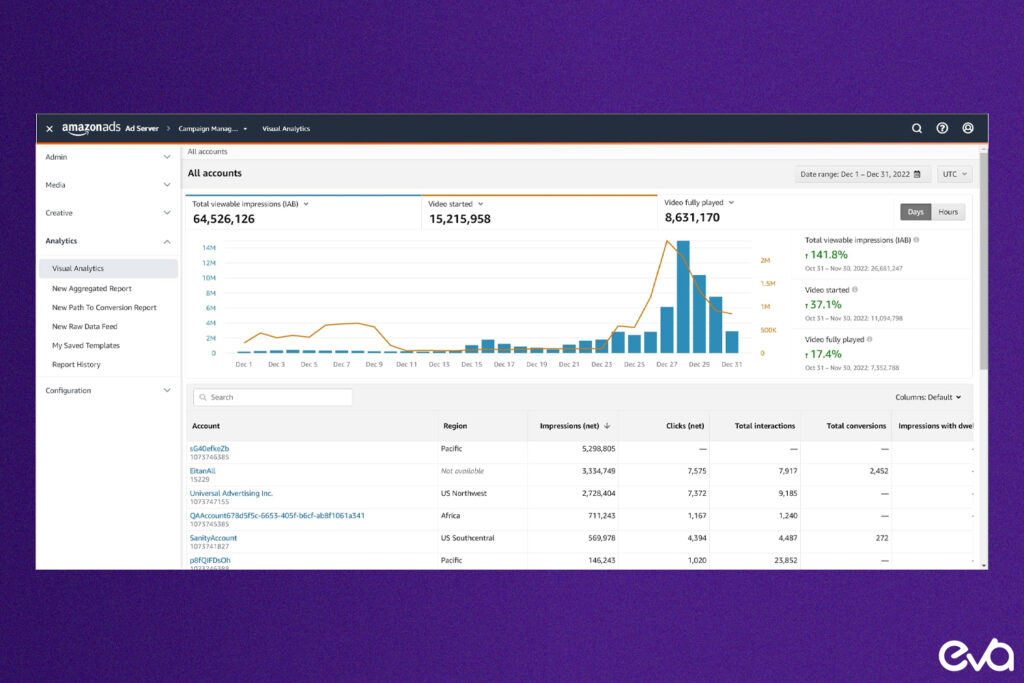
Key Metrics to Monitor
- Impressions: The number of times your ad is played.
- Click-Through Rate (CTR): The percentage of listeners who take action (e.g., clicking a link or using a voice command) after hearing your ad.
- Conversions: The number of users who complete a desired action (e.g., making a purchase) after hearing your ad.
These metrics will give you a clear understanding of how your ads are performing and where improvements can be made.
Analyzing Consumer Engagement
Engagement is a critical factor in the success of audio ads. Tools like Amazon’s Advertising Console provide detailed insights into how consumers are interacting with your ads.
- Tool Tip: Use the Audience Insights report to see demographic data, engagement rates, and conversion metrics.
By analyzing these insights, you can identify which aspects of your ad are resonating with listeners and adjust your strategy accordingly.
Optimizing Based on Performance Data
Once you have collected data on your ad’s performance, use it to optimize future campaigns. This might involve tweaking your messaging, adjusting your target audience, or changing your CTA.
- Action: Conduct A/B testing to compare different versions of your ads and see which performs better.
Continuous optimization is key to maintaining and improving the effectiveness of your Amazon Audio Ads campaign over time.
How Eva Can Help with your Amazon Audio Ads
Eva is a powerful tool that can help streamline the process of creating, managing, and optimizing Amazon Audio Ads.
With Eva, you can take full advantage of Amazon’s advertising ecosystem to reach your target audience effectively.
Eva’s Features and Benefits
Eva offers a range of features designed to enhance the effectiveness of your audio ad campaigns, including:
- Automated Campaign Management: Eva automates the process of managing your campaigns, allowing you to focus on strategy and creative.
- Advanced Targeting Options: With Eva, you can leverage Amazon’s vast data resources to create highly targeted audio ads that reach the right audience at the right time.
- Performance Analytics: Eva provides detailed analytics on your ad’s performance, helping you make data-driven decisions to optimize your campaigns.
“Eva helped us reach our target audience more effectively than ever before. The insights we gained from Eva’s analytics were invaluable in refining our strategy and improving our ROI.” – Marketing Director, Health & Wellness Brand.
If you’re looking to maximize the impact of your Amazon Audio Ads, Eva can help. Explore Eva’s features today and see how it can enhance your audio advertising strategy.
Conclusion
Key Points
Amazon Audio Ads represent a major shift in how brands connect with consumers. By focusing on sound and integrating interactive features, these ads offer a unique, non-intrusive way to reach audiences during their most engaged moments.
As screen fatigue continues to rise, audio ads provide a refreshing alternative that resonates with today’s digital consumers.
Encouragement to Start Exploring Audio Advertising
With their high engagement rates and seamless integration with Amazon’s ecosystem, Amazon Audio Ads are a powerful tool for any brand looking to enhance its digital marketing strategy.
Now is the time to explore the potential of audio advertising and see how it can help you reach your marketing goals.
Whether you’re new to audio ads or looking to optimize your existing campaigns, there’s never been a better time to dive in.
Start today and discover the impact that Amazon Audio Ads can have on your brand’s success.
FAQ
A1: Amazon Audio Ads are non-visual, immersive advertisements that reach consumers through audio content across Amazon’s platforms.
A2: The cost of Amazon Audio Ads varies based on factors such as ad length, targeting options, and campaign duration.
A3: Success can be measured through key metrics such as impressions, CTR, and conversions, all of which can be tracked through Amazon’s Advertising Console.
A4: Review your targeting settings and ensure your ad meets Amazon’s requirements. Consider adjusting your bid or budget to increase visibility.
A5: Test different ad creatives and CTAs to see what resonates best with your audience. Personalization and interactivity are key to boosting engagement.

